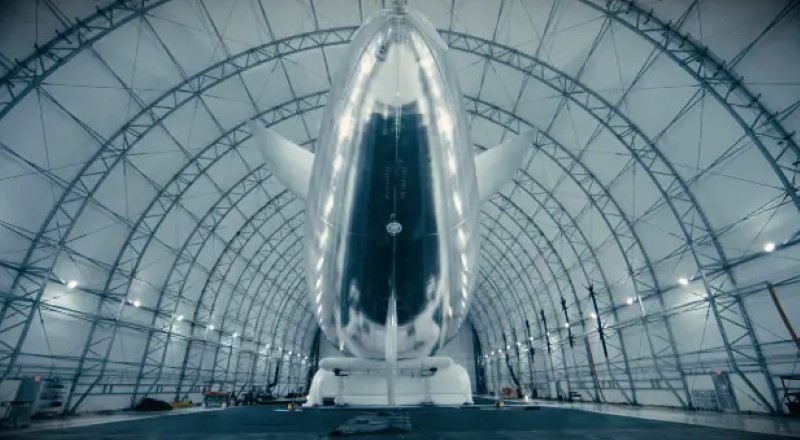Sceye, an aerospace company founded in 2014, is driving a revolutionary technological advancement. The company has developed a solar-powered vehicle designed to deliver high-speed internet services to remote areas. Called the High Altitude Platform Station (HAPS), the vehicle’s core technology is capable of utilizing solar energy to hover in the stratosphere, thus covering large areas.
Sceye HAPS: revolutionary solar-powered flying machine
Sceye’s founder, Mikkel Vestergaard Frandsen, is a pioneer in the field of public health. He is also the owner of Vestergaard, which is known for producing the water purification device LifeStraw. Frandsen’s background gives Sceye a unique sense of purpose, not only in terms of technological innovation, but also in terms of global social responsibility.

The Sceye HAPS vehicle is a remarkable design. It is a 65-meter-long unmanned helium blimp capable of launching vertically and rising to altitudes of 60,000 to 65,000 feet (about 18,288 to 19,812 meters). Unlike commercial airplanes, the craft is able to operate in the more stable stratosphere, greatly reducing interference from wind speeds and air currents.
In order to support prolonged hovering, the exterior of Sceye HAPS is covered with a special “solar cloak”. This cloak consists of gallium selenide and gallium arsenide solar cells that efficiently capture and utilize solar energy to provide continuous power for the vehicle. This design allows HAPS to remain at high altitude for long periods of time, serving a wide range of applications.
Versatile application scenarios: from Internet coverage to disaster monitoring
The Sceye HAPS has a wide range of promising applications. It is capable of maintaining a hover at a given altitude and GPS coordinates for several months. During this time, it can provide broadband Internet to underserved communities, helping to fill gaps in communication networks. In addition, it can monitor climate change and environmental conditions, providing important data for scientific research.
The vehicle also shows potential in natural disaster monitoring, as the Sceye HAPS is able to monitor natural disasters, such as forest fires, and provide timely warnings to help protect human life and property. This feature makes it not only a communication device, but also a multifunctional monitoring tool.
Sceye HAPS has made significant progress since its first flight in 2021. On its first flight, the vehicle reached an altitude of 64,600 feet (approximately 19,690.08 meters) and demonstrated its superior performance at high altitudes. Since then, Sceye HAPS has repeatedly validated its technical capabilities and practical application potential.
It is worth mentioning that the Sceye HAPS also realized a long-distance data connection with smartphones on the ground. With an onboard 4G active antenna array and beamforming technology, the vehicle successfully maintained an LTE OpenRAN data connection over a distance of more than 140 kilometers, an achievement that far exceeds the typical connectivity range of LTE.

Test flight progress and future prospects
During a recent flight test, the Sceye HAPS demonstrated its ability to recharge its batteries via solar power during the day and use those batteries to stay aloft at night. The flight was launched from the Sceye facility in New Mexico on the morning of August 15, 2024, and continued to hover in the air until noon the following day. This test verified the vehicle’s ability to operate continuously through the day/night cycle.
In addition, the vehicle has demonstrated its ability to hover in place and move to another area within a designated operational area. This flexibility lays the groundwork for future commercial applications, allowing it to be adapted to different mission requirements and operating environments.
To date, Sceye HAPS has conducted 20 test flights, each advancing the technology and testing new features. The company plans to conduct two more test flights later in 2024 to further refine the technology in preparation for upcoming commercial operations.
According to Sceye’s plans, the HAPS project is expected to be in full commercial operation by 2025. At that time, the innovative vehicle will provide continuous and efficient internet services to multiple regions around the world, especially in places that are difficult to reach with traditional terrestrial infrastructure.
The Sceye HAPS is more than just a science and technology project; it is also a harbinger of the future of high-altitude platform technology. This vehicle is expected to be a cost-effective and environmentally friendly solution to provide Internet connectivity to remote areas of the world and play a key role in environmental monitoring and combating climate change.












